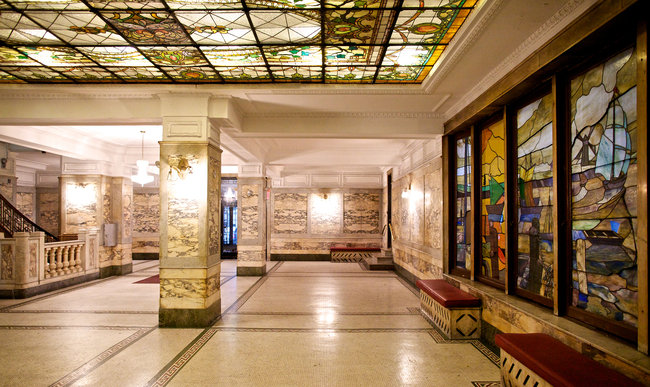From the West End Preservation Society
“Developers often worked with a small group of architects who specialized in the design and planning of apartment buildings that would meet all of the local regulations while simultaneously providing units planned to meet the expectations of the upper-middle-class households who could afford West End Avenue rents. The most prolific architect active on West End Avenue was the firm of Schwartz & Gross (Figures 8-9). Simon Schwartz and Arthur Gross, architects who had met while studying at the Hebrew Technical Institute, were apartment house experts, responsible for twenty-five buildings on West End Avenue and several hundred elsewhere in Manhattan.”
Andrew S. Dolkart, West End Avenue Survey pg 25
“Although Schwartz & Gross’s office designed scores of apartment buildings faced with Renaissance and Neo-Classical detail, they occasionally designed a building with extraordinarily unusual Arts and Crafts detail, with features seemingly inspired by the decorative designs of Louis Sullivan, notable on two of West End Avenue’s most beautiful buildings, the Chautauqua at no. 574, on the southeast corner of West 88th Street (1911, figure 7) and the Cleburne at no. 924, on the northeast corner of 105th Street (1912).”
Andrew S. Dolkart, West End Avenue Survey ppg 26-7
“As a neighborhood that was part of the first wave of middle-class apartment-house construction in New York City, Morningside Heights contains an early concentration of speculative apartment buildings designed by these architects. Three firms, George Pelham, Neville & Bagge, and Schwartz & Gross, were responsible for more than half of the apartment houses on Morningside Heights and, indeed, for thousands of other apartment buildings located throughout Manhattan. Thus, they were among the most prolific designers ever to work in New York City. Although generally unheralded, it was Schwartz & Gross, George Pelham, Neville & Bagge, and other speculator architects who, by the sheer volume of their work, created the architectural character and texture of many of New York’s neighborhoods, while more prestigious architects like McKim, Mead & White, Carrere & Hastings, and Delano & Aldrich designed only a small number of great monuments that are set amidst the city’s more typical speculative buildings.”
Andrew S. Dolkart, Morningside Heights: A History of Its Architecture and Development pg 295
Buildings on West End Avenue include: 260, 290, 305, 375, 440, 500, 525, 574, 588, 617, 700, 740, 771, 845, 855, 924 and 949.
